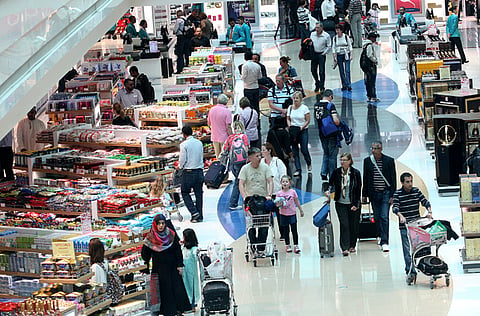Airport duty-free shopping can be a winner in any global tariff war
Airport operators can provide a compelling reason for travelers to buy more en-route

The 90-day pause before the implementation of new US tariffs presents a critical juncture for the travel retail industry.
With proposed tariffs of up to 125% on imports from China - impacting categories such as luggage, electronics, and apparel - and anticipated retaliatory actions from other economies, the relative pricing landscape of globally traded consumer goods is poised for dramatic shifts.
This 90-day window offers a singular opportunity - for travel retailers to reposition themselves as the preferred shopping destination for value-seeking, globally mobile consumers. The question is not whether the value equation will change - but who will move fast enough to lead.
Understanding the impending value shift
According to various studies, global luxury retail sales are expected to grow at 4.3%-5.6% CAGR through 2027, but regional imbalances will widen due to currency fluctuations and protectionist policies.
With tariffs set to distort pricing across borders, the travel retail channel regains its edge as a value arbitrage opportunity.
For American travelers, non-US luxury goods - such as European skincare, French fragrances, Japanese electronics, and Italian fashion - will become significantly more expensive within the US.
For example, tariffs on imported cosmetics could raise shelf prices by 20%–30%. Meanwhile, duty-free stores in airports abroad will continue offering these products at globally competitive rates.
For international travellers: Iconic US brands like Estée Lauder, Coach and Levi’s may face increased domestic pricing due to reciprocal tariffs. However, these same products - when purchased at US airport duty-free outlets - will remain exempt from such tariffs, maintaining their price advantage for foreign buyers.
According to a 2024 Bain & Company luxury report, more than 35% of all luxury purchases are now influenced by cross-border price comparisons. This figure jumps to 50% among Gen Z and millennial consumers - two cohorts rapidly becoming the dominant demographics in international travel.
Strategic actions
To capitalize on this rapidly evolving landscape, travel retailers and their brand partners must act with urgency and precision. The following strategic priorities should be top of mind:
Reassess assortment strategies: Traveler profiles vary significantly by region and terminal. US airports should double down on American brands and high-impact promotional zones aimed at international traffic. Conversely, European and Asian airports should boost visibility for categories that will soon see price hikes in the US - such as French cosmetics, Japanese watches, and German electronics.
Enhance value communication: According to our in-house study, 61% of global shoppers say they ‘actively seek deals and promotions’ while traveling. Retailers must clearly communicate the comparative savings available through duty-free purchases - whether through dynamic digital signage, QR-driven price comparison tools, or high-visibility call-outs like ‘Buy Before Tariffs Hit’.
Optimize inventory management: The World Travel & Tourism Council (WTTC) forecasts international travel to return to 95% of pre-pandemic levels by end-2025. Retailers must model SKU-level demand across key corridors (e.g., US–EU, China–Middle East) and recalibrate replenishment cycles accordingly. Predictive analytics and agile supply chains will be indispensable to minimize out-of-stock risks.
Collaborate with brands on targeted promotions: High-margin categories impacted by tariffs - like prestige beauty and premium spirits - lend themselves well to co-funded activations. Examples include limited-time bundles, pre-travel reservation incentives via e-commerce platforms, or ‘tariff-protected’ product launches exclusive to the travel retail channel.
Leverage data analytics: Personalization remains underutilized in travel retail. By harnessing anonymized customer profiles, purchase histories, and travel itineraries, retailers can deploy segmented marketing - driving conversion rates up to 25%, as evidenced by BCG’s benchmarks in adjacent retail sectors.
Long-term considerations: While the 90-day tariff reprieve offers a tactical opening, the long game lies in operational resilience. Flexible supply networks, local-for-local production models, and dynamic pricing capabilities must become foundational elements of the travel retailer’s operating model.
Additionally, we must prepare for the acceleration of digital duty-free, which McKinsey projects will account for over 30% of travel retail purchases by 2028 - blurring the boundaries between physical airport stores and omni-channel ecosystems.
The current pause in tariff implementation is more than a temporary reprieve - it is a strategic inflection point. The travel retail industry has a narrow window to redefine its value proposition, activate targeted commercial levers, and emerge not just reactive, but revitalized.
The next 90 days will not only separate market leaders from laggards - they may well determine the competitive landscape for the next decade.
Sign up for the Daily Briefing
Get the latest news and updates straight to your inbox




